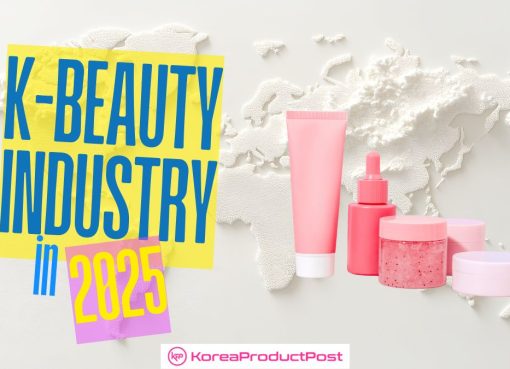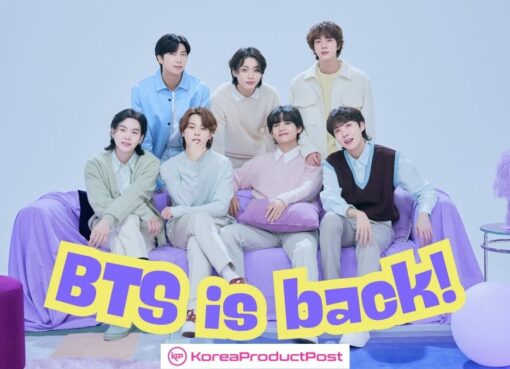As global brands compete for attention in rapidly evolving consumer markets, Korea’s strategic pivot toward India stands out. This growing affinity is not just a passing trend. With a demographic edge and an increasing appetite for global trends, India is emerging as a critical destination for Korean fashion, beauty, and food brands. This transformation is driven by the country’s youthful population, a burgeoning middle class, and an intensifying interest in Korean culture. From skincare routines inspired by K-dramas to the fashion sensibilities of K-pop idols, Indian consumers, especially the youth, are embracing Korean products with enthusiasm.
The Demographic Engine Behind the Boom
India’s population, now exceeding 1.4 billion, is distinguished not only by its size but by its youth. Roughly 26 percent of Indians are aged between 15 and 29, a segment that is highly influential in shaping consumption patterns. This demographic is digitally connected, culturally curious, and increasingly brand-conscious. As they ascend the socio-economic ladder, their preferences are defining market trends across categories, especially in fashion, beauty, and lifestyle.
Equally significant is India’s expanding middle class, projected to encompass over 715 million people by 2030, almost 47% of the population. With greater disposable income and increasing exposure to global cultures through social media, this cohort is fueling demand for premium and niche international products. For Korean companies, this confluence of factors offers an ideal environment for expansion.
Korean Fashion Brands Make Strategic Moves
Korean fashion is admired globally for its clean lines, modern tailoring, and urban sophistication, qualities that resonate strongly with India’s style-conscious consumers.
LF Corp., a major South Korean fashion retailer, recently announced plans to introduce its premium brand, Hazzys, to Indian consumers. With initial efforts focused on e-commerce, LF now aims to open brick-and-mortar stores in India, including flagship locations in key urban centers. The company’s strategy is aligned with the evolving tastes of Indians. Golf-inspired casual wear and polished streetwear, both central to the Hazzys brand, are well-suited to India’s aspirational consumers.
Indian fashion consumers are in a transitional phase. While traditional wear remains important for cultural occasions, everyday fashion is leaning increasingly toward minimalism, streetwear, and smart casual styles. These trends align perfectly with K-fashion aesthetics. Other Korean brands such as 8Seconds and MUSINSA are also rumored to be exploring market entry, either directly or through collaborations with Indian e-tailers.
K-Beauty’s Growing Shelf Space in Indian Homes
Perhaps no category has seen a more meteoric rise than Korean beauty. K-beauty, has become a global phenomenon, and India is no exception. What started as a niche interest among K-drama and K-pop fans has rapidly evolved into a mainstream trend. Indian consumers, particularly in urban areas, are increasingly embracing Korean skincare and cosmetic products, drawn by their focus on hydration, natural ingredients, and long-term skin health.
According to Future Market Insights, the global K-beauty market is projected to surpass $20 billion by 2035, with emerging markets such as India contributing significantly to this growth. Brands such as Innisfree, Etude House, and Laneige have already entered the Indian market through partnerships and online platforms.
Importantly, Korean brands are not just exporting products, they are bringing a skincare philosophy that resonates with Indian consumers who are shifting from short-term cosmetic fixes to holistic skincare routines. This alignment in values is helping Korean brands build lasting relationships with customers in India.
Some brands have gone a step further by launching India-specific lines, introducing lighter packaging, and even modifying scents to suit Indian preferences. Influencer marketing, particularly via beauty vloggers and dermatologists on Instagram and YouTube, has played a critical role in building consumer trust and familiarity.
Korean Cuisine Finds a Place on Indian Tables
While K-dramas introduced Indian audiences to kimchi and ramyeon, Korean food brands are now offering those experiences off-screen. Lotte Wellfood (formerly Lotte Confectionery) has recently established a manufacturing facility in Pune, specifically designed to produce frozen desserts and snacks for the Indian market. The facility marks a major investment, reflecting confidence in India’s long-term consumer potential. Its popular treats like Jaws Bar and Dweji Bar are expected to hit shelves across metropolitan India this year.
Food exports from Korea to India grew from $35.7 million in 2018 to $57.7 million in 2023, according to Korea Agro-Fisheries & Food Trade Corp. This surge reflects a growing demand for global flavors and adventurous snacking, particularly among India’s Gen Z and millennials.
In addition to packaged goods, Korean cuisine is making its mark in urban India’s dining scene. Restaurants and pop-up kitchens in cities like Bengaluru, Mumbai, and New Delhi now serve bibimbap, bulgogi, and tteokbokki, often adapting spice levels to suit Indian palates. Korean brands are also increasingly partnering with food delivery platforms and cloud kitchens to scale their footprint efficiently.
Localization and Collaboration: Keys to Success
While India offers enormous potential, success requires deep localization. Korean brands are learning that Indian consumers vary not just by geography but by climate, language, and price sensitivity. Brands are therefore investing in market research, regional packaging, and Indian-language content to improve relatability.
For instance, some K-beauty brands have launched travel-sized or sachet versions of their bestselling products to meet the needs of value-conscious buyers. In fashion, collaborations with Indian influencers like Komal Pandey or Sakshi Sindwani are helping Korean brands reach younger, style-savvy audiences. Even in food, adjusting spice levels or offering vegetarian variants has proven crucial to gaining broader appeal.
Partnerships with Indian distributors, content creators, and logistics providers have become a vital part of these localization efforts. Rather than treating India as just another export market, Korean firms are now embedding themselves more deeply into the local ecosystem.
Challenges Remain, But So Do Opportunities
India is a complex and diverse market. Regional variations in language, climate, and cultural norms can make scaling a challenge. Additionally, competition from well-established Western brands and fast-growing Indian startups further intensifies the pressure.
However, the rewards are substantial. Tier-2 and tier-3 cities, often overlooked in the early stages of international expansion, are rapidly becoming important consumption hubs. These markets are home to upwardly mobile consumers who are eager to experience global brands but are underserved by traditional retail channels.
Korean brands that are agile, culturally sensitive, and willing to invest in long-term localization stand to gain the most in India.
Winning Playbooks: Lessons from the Front-Runners
| Strategic Lever | What Korean Companies Are Doing | Why It Works in India |
|---|---|---|
| Local manufacturing & R&D | Samsung’s Noida plant and Hyundai’s EV localization | Beats import duties, qualifies for production-linked incentives, signals commitment |
| Omnichannel distribution | Amorepacific on Reliance Tira, Lotte on Swiggy Instamart | Reaches Tier-2/3 cities where malls and K-culture fandom are exploding |
| Cultural storytelling | K-drama product placement, BTS-backed campaigns | Converts soft-power interest into hard-goods demand |
| Value-premium pricing | Hazzys slots below European luxury but above fast fashion | Matches the aspirational yet price-sensitive mid-segment |
Conclusion
India is no longer a distant frontier for Korean brands; it is a strategic priority. The country’s youthful population, rising middle class, and deepening engagement with Korean culture provide fertile ground for growth across multiple sectors. Whether in fashion, beauty, or food, Korean companies that align their global strengths with local insights are poised to thrive in one of the world’s most dynamic consumer markets.
As the Korean Wave continues to ripple through Indian society, the relationship between the two nations is evolving from cultural exchange to commercial partnership, one that promises to reshape consumer habits on both sides of the globe.
If you’re looking to promote your products and connect with international buyers, please don’t hesitate to contact us.









